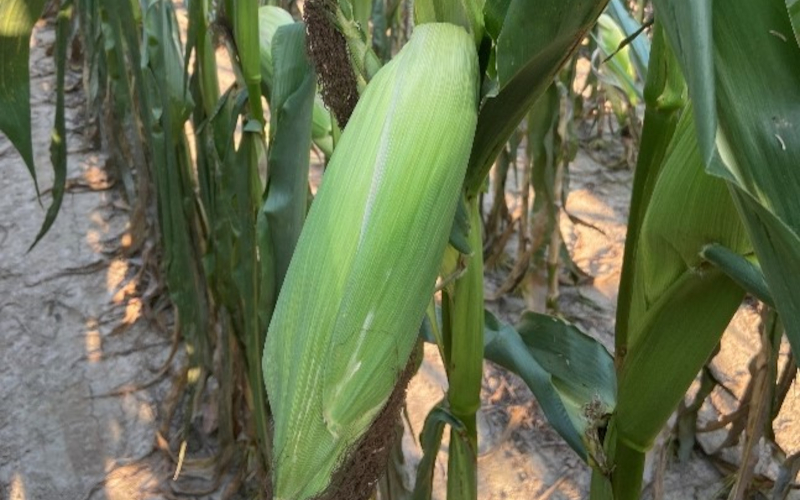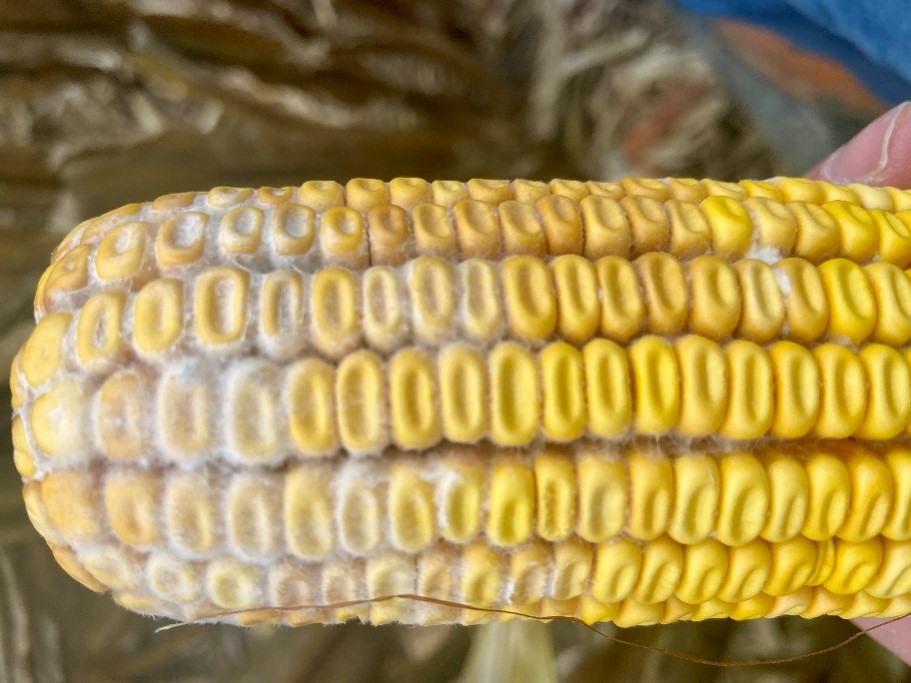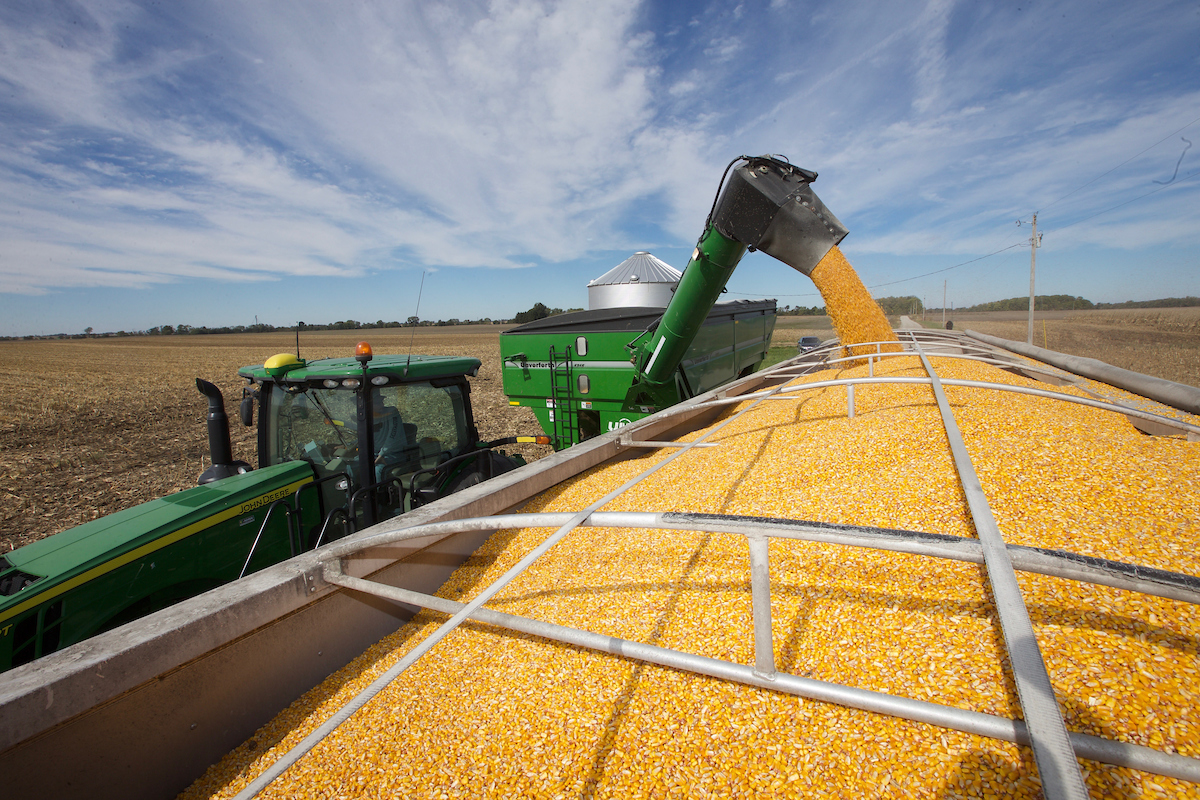Once the corn seed is planted, the waiting game for the first corn plants to emerge begins, which also means assessing (or worrying) if any issues had occurred. Corn typically requires about 100 to 120 growing degree days (GDDs) to emerge, which means both air and soil temperatures have a large influence on corn emergence timing from the soil. For example, if soil temperatures are warm, corn can emerge in as little as 4 – 5 days, whereas if soil temperature are cool, it may take upwards of 20 – 30 days to emerge. In addition, factors such as residue coverage, seed depth, and soil moisture may also influence soil temperature and emergence timing. Therefore, just because your thermometer in the soil says 50 degrees F, doesn’t mean that the corn plant won’t take a while to emerge and potentially be exposed to issues before emergence occurs, especially if soil temperatures remain at or around 50 degrees F. As a reminder, to calculate growing degree days, calculate the average daily air temperature (high + low)/2 and subtract the base temperature, which for corn is 50 degrees F. In addition, if the daily high and low temperatures are above and below 86 degrees and 50 degrees, respectively, then use the actual temperatures. However, if the temperatures are above 86 degrees or below 50 degrees, then use 86 degrees or 50 degrees in the formula.
The emergence process in corn starts with the elongation of the mesocotyl (a white, stemlike tissue that connects the seed to the base of the coleoptile and is essential for transferring energy from the seed to the young corn seedling), which moves the coleoptile (a protective sheath that surrounds the primary shoot, inner leaves and is first noticeable as corn begins to break the soil surface) toward the surface of the soil. Once the coleoptile tip has reached the soil surface, light exposure will disrupt the elongation and cause it to stop. Interestingly, once elongation is stopped, the depth of the coleoptile base will typically remain constant at ~ ¾ inches below the soil surface and you can use the length of the mesocotyl + ¾ inches to help determine how deep the corn was planted. Once the coleoptile has reached the soil surface (often known as the VE growth stage), exposure to sunlight will cause the coleoptile tip to soften and allow for the expansion of the inner leaves and the first true leaf to emerge from the tip of the coleoptile. In certain cases, corn emergence issues may occur due to the coleoptile splitting underground and causing premature leaf emergence below the soil surface. Factors which can cause this issue include exposure to sunlight (poor seed furrow closure), herbicide injury (corkscrew coleoptile), surface crusting and/or sidewall compaction (corkscrew coleoptile), and cold injury (corkscrew mesocotyl). Therefore, when assessing emergence and stand establishment issues in corn following planting, it is almost always important to take out the shovel and assess the corn plant and root health belowground.
Additional Resources:
Nielsen, R.L. 2020. The emergence process in corn. Corny News Network. Purdue Univ. Ext. https://www.agry.purdue.edu/ext/corn/news/timeless/emergence.html#:~:text=As%20with%20all%20of%20corn,as%20little%20as%204%20days.





